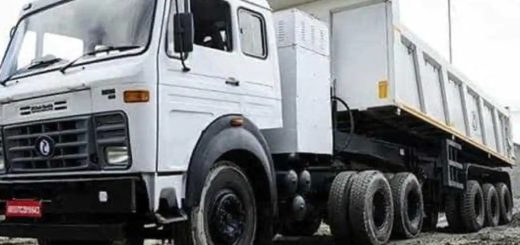Economy the top issue facing trucking industry
The economy emerged as the number one issue on the minds of trucking industry professionals, according to an annual survey of more than 4,000 people by the American Transportation Research Institute (ATRI).
It was the first time the economy topped the list of trucking industry concerns since the Great Recession, when it occupied the number one spot for three years. It came as no surprise to Rebecca Brewster, president and COO of ATRI, since research this year by the organization revealed that trucking operational costs surpassed $2 per mile for the first time ever.
“No surprise at all,” agreed Cari Baylor, president of Baylor Trucking, who joined Brewster on stage to reveal the Top 10 trucking industry issues at the American Trucking Associations’ Management Conference & Exhibition. “It’s been a ride the past year.”
The second most pressing issue facing the industry, according to the survey, was truck parking – or lack thereof. This was the highest ranking it had received since first appearing on the list in 2012, but it has been within the top five since 2015.
“It’s a big issue. It has been for years. We saw a drop in utilization because of a lack of parking,” said Baylor, whose company grades driver managers on utilization, which prompts them to help drivers secure parking spots in advance. The company is also more selective about who it hauls for – if customers don’t have on-site parking and amenities for drivers, Baylor won’t take the load.
Fuel prices rounded out the top three issues, down two spots from last year. It was the number one concern for drivers, many of whom are owner-operators. Dean Key, a professional truck driver with Ruan Transportation, said he does whatever he can to control fuel costs.
“As much as nobody wants to hear it, slower is better for fuel economy,” he said, adding he also maximizes time in cruise control. He also suggested drivers can improve fuel economy with better trip planning, so they know where they’re going and don’t get stuck out of route.
A softer freight environment saw the driver shortage fall to number four. It previously occupied the top spot for five years in a row but has slid the last two years with weaker freight demand. Brewster said only 2.7% of over-the-road drivers are women, and urged the industry to do a better job making the profession attractive to females.
“Our shortage is qualified applicants,” said Baylor. “We are getting a lot of applicants but finding experienced drivers with safe records is our challenge.”

Driver compensation was the number five issue, down one spot. Brewster said ATRI research shows driver pay was increased an average of 15.5% coming out of the pandemic, and including benefits driver compensation now totals about 90 cents per mile.
“It’s not just the rate of compensation, but everything that goes with it,” said Key.
Baylor said her company has found many drivers don’t fully understand their pay per mile, so it’s now broken out and highlighted on each pay stub so that they know their pay is competitive with industry standards.
Nuclear verdicts, or lawsuit abuse reform to prevent them, came in at the sixth spot, but third among motor carrier respondents. Baylor said she recently was told the so-called billboard lawyers targeting trucking companies have advertising budgets exceeding $1 million a month. “To me, that was absolutely stunning,” she said.
Driver distraction was the number seven concern. The National Highway Traffic Safety Administration reports that 3,500 people are killed in distracted driving crashes in the U.S. each year.
“We see it every day,” said Key. “It’s not just cellphones, anything can be a distraction. We see people eating, reading papers, reading books.”
The industry is looking beyond its own drivers to address this. Baylor has people visit local schools to teach students from a young age about the risks of distracted driving.
The eighth top industry concern was driver retention, down one spot from last year. Baylor said her fleet addresses this through frequent communication with drivers and getting them involved in the spec’ing process. The fleet does three interviews with a prospective hire before they’re through orientation to ensure it’s a good fit.
“The biggest part for me is teamwork, to be part of a team,” said Key.
Detention time at shippers and receivers was the ninth top issue, sliding from number six last year, likely due to the softer market.
“If the wheels aren’t turning, I’m not making any money,” said Key. “Also if you are detained, you might miss your next appointment or miss a complete load.”
Baylor said her company proactively informs shippers and receivers of their problematic locations. “Some customers don’t even know,” she said, noting the company has a trailer to tractor ratio of four-to-one due to detention.
The Top 10 list was rounded out with a new issue: zero-emission vehicles. Brewster said if all cars and trucks in the U.S. were to go electric today, 40% of all electricity capacity would be required just to charge them. There would also need to be chargers at every truck parking spot in the U.S., which would cost about US$35 billion to deploy.
“I’m excited it made the Top 10 list,” said Baylor, noting there are so many unanswered questions, including who will want to even insure a $400,000 truck. “There’s a lot of work to do on this topic,” she added.
visit at-https://shorturl.at/opsx9




Recent Comments